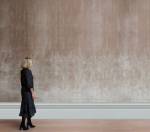Eugen von Blaas
No love without envy
Oil on canvas: 40.7 x 48.5 (in) / 103.5 x 123.2 (cm)
Signed and dated lower right: Eugen von Blaas / 1901.
This artwork is for sale.
Please contact us on: +44 (0)20 7493 3939.
Email us
EUGEN VON BLAAS
Albano near Rome 1843 - 1932 Venice
Ref: BZ 188
No love without envy
Signed and dated lower right: Eugen von Blaas / 1901.
Oil on canvas: 40 ¾ x 48 ½ in / 103.5 x 123.2 cm
Frame size: 48 ½ x 56 ½ in / 123.2 x 143.5 cm
Provenance:
Rayner MacConnal, London;
private collection, UK, acquired from the above in 1952, then by descent
Katharina Seyffertitz-Blaas has confirmed that this is an autograph work by Eugen von Blaas
In this charming scene of courtship and desire, the subtle, architectural backdrop tempers the vibrancy of the protagonists, whose bright and colourful clothing suggests something of their passionate natures and lively conversation. In an open, sunlit courtyard, a dark-haired orange seller stands to the fore, flattered by the attentions of her bare-foot admirer. To their right, three women stand, lean and sit against a great stone well, the water and their copper pails forgotten as they observe the flirtation with both pleasure and envy. The conviviality of the women, the intensity of the man’s gaze and the amused indifference of the dark-haired beauty create a lively composition, superbly capturing the life of the street and the joy of being young, carefree and admired. The theme of flirtation suffuses the artist’s work as sunlight saturates his palette.
Photographs taken of the artist as a youth suggest that the man might be a stylised self-portrait. Von Blaas married Paola Prina in 1870, and likenesses of the two of them enter his work from this date, not directly as portraits, but as characters in genre scenes such as No love without envy.
The beautiful venetian genre scenes of Eugen von Blaas capture the nineteenth century passion for Italy. The combination of the great Classical sites, the picturesque costumes and customs ascribed to the Italian peasantry and the golden delights of the Italian climate had lured hundreds of English and French visitors to Italy on Grand Tours since the 18th century. Images of Italian peasant life had been made popular in the 1800s by Louis Léopold Robert (1794-1835) and Charles Eastlake (1793-1865). These picturesque visions of traditional rural life appealed to a generation of collectors who came of age during the Industrial Revolution. Italy’s struggle for independence and the tragic fate of Garibaldi encouraged a second flowering of interest in Italy in the 1860s. Von Blaas creates a charming Mediterranean mood both through the careful evocation of Venetian building styles and the distinctive beauty of the local women in traditional laced dresses.
EUGEN VON BLAAS
1843 - Albano, Rome - 1932
Eugen von Blaas captured the everyday lives of humble Venetians amid ancient courtyards and narrow calle. As Thomas Wassibauer comments, ‘He contrasted the decaying grandeur of old Venetian stone with fresh flowers and fruit or to young people…his young people live their lives within the old walls of a still-important city, and become links in an apparently endless chain of generations who carry on the Venetian traditions and way of life.’[1]
Von Blaas lived in Venice most of his life and the rich colour and dazzling impasto of painters like Titian and Tintoretto seeped into his own art. Throughout the nineteenth century, the magic and mystery of Venice attracted celebrated tourists, among them John Ruskin, Richard Wagner and Henry James. Venice’s indigenous inhabitants lived their own separate and secret lives, rich in their own traditions, the beauty of the women and children part of the city’s fascination.
Eugen von Blaas was born in Italy, of Austrian parents, at a time when northern Italy was ruled by Austria. His father, Carl von Blaas (1815-1894), was a leading history, portrait and fresco painter. The family lived in Rome, Albano and Venice before Carl returned to Vienna to take up a post at the Akademie der Bildenden Künste in 1851. He returned to Venice in 1856 to teach at the Academia di Belle Arti in Venice, a post which Eugen later held.
Eugen studied with his father and spent the rest of his career in Venice, with trips to Austria from 1860 to 1872 to assist Carl on fresco paintings for the Vienna Arsenal. So successful were these that in 1877 Emperor Franz Joseph I elevated Carl to the status of hereditary nobility. In 1870 Eugen married Paola Prina, daughter of a north Italian aristocrat and possessed of a considerable fortune. The couple lived a fashionable life and owned a palazzo on the Zattere and a country villa.
Eugen painted portraits and genre scenes of Venetian life, depicting attractive young people gathering in the venerable stone campi to sing, play music, flirt and sew. From the 1880s he concentrated more on single pictures of young women, often street vendors or going about their domestic tasks in picturesque local dress. These are frequently painted on panel, with dazzling, rapid brushwork.
Eugen von Blaas had an international exhibiting career. He was a regular contributor to the Esposizione Nationale in Venice and the Jubilaums Austellungs held in Vienna and Munich. He also showed his paintings at the Royal Academy, the Grafton Gallery and the New Gallery in London between 1875 and 1892. Von Blaas died in Venice in 1932.
The work of Eugen von Blaas is represented in Leicester City Art Gallery; Nottingham Castle Art Gallery; the Mappin Art Gallery, Sheffield; the Kunsthistorisches Museum, Vienna; the National Gallery of Victoria, Melbourne and the Art Gallery of New South Wales, Sydney.
[1] Thomas Wassibauer, Eugen von Blaas (1843-1931), Das Werk, Georg Olms Verlag, Hildesheim, 2005, p.19.
















